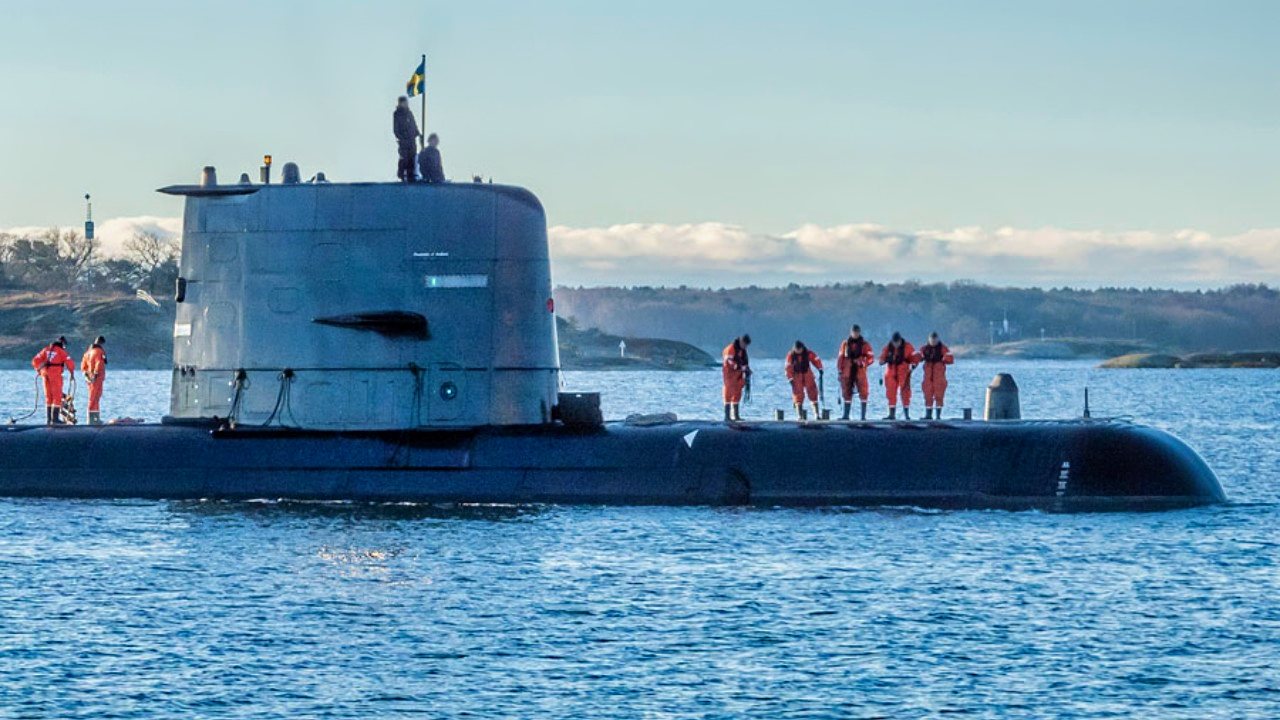How a Cheap and Tiny Submarine 'Sank' a $4.5 Billion Navy Aircraft Carrier
Designed for stealth and maneuverability, Gotland-Class submarines have proven their worth, even "sinking" a US aircraft carrier in a 2005 wargame. As a NATO member, Sweden's sophisticated, albeit small, submarine fleet stands as a crucial asset against rising threats.
Summary: With a strategic position near the Baltic Sea and Russia's Kaliningrad, Sweden has invested in its navy, spotlighting the advanced Gotland-class submarine. Designed for stealth and maneuverability, these submarines have proven their worth, even "sinking" a US aircraft carrier in a 2005 wargame. As a NATO member, Sweden's sophisticated, albeit small, submarine fleet stands as a crucial asset against rising threats.
Under the Baltic Waves: Sweden's Stealth Submarines Redefine Modern Warfare
In an age when few European states are matching their passionate anti-Russia rhetoric to their defense budgets, Sweden stands as a unique example. For years, the northern European country acted as a neutral entity, eschewing membership in the North Atlantic Treaty Organization (NATO), for example.
After the Russian invasion of Ukraine, however, that changed. Sweden began to take drastic steps to align itself with NATO. Even before it joined NATO last year, though, Sweden took its naval defenses seriously.
Sweden’s Hunt for Red October in 2014
Sure, there was a period after the Cold War, after the Soviet Union died and a chaotic, weak Russian Federation replaced the USSR, when Sweden believed it was an era of perpetual peace.
But that myth was shattered way back in 2014.
At that time, Russian submarines began to flagrantly and repeatedly violate Swedish territorial waters.
It was October 2014 and a Russian submarine had apparently hidden itself in waters near Stockholm after it had suffered mechanical failure of some kind while being on a covert spying mission. Nearly 200 Swedish military personnel were mobilized, along with helicopters, minesweepers, and an antisubmarine corvette outfitted with stealth-type and radar-masking, according to a Guardian report from that time.
In fact, Swedish intelligence intercepted a string of communications from the suspected Russian submarine operating near Stockholm and its home base in the Kaliningrad (a region that was once Prussia before Germany lost the Second World War and was conquered by the Soviet Red Army in 1945).
Sweden’s presence on the Baltic Sea, very near one of Russia’s four warm water ports—the aforementioned Russian submarine base in the Kaliningrad—has forced Sweden to become hyper-vigilant of its maritime borders. Thus, Sweden has spent the last decade or so investing its limited defense funds into beefing up its navy. Sweden is a modern nation, possessing a gross domestic product (GDP) of around $600 billion makingSweden the 25th largest economy in the world.
What’s more, despite having a relatively small military, the Swedish military possesses sophisticated weapons and an advanced manufacturing base (especially when it comes to their naval capabilities).
Sweden’s Gotland-class Submarine: Small but Strong
The Gotland-class submarine is one of the pride-and-joys of the Swedish navy. Their design can be traced back to the 1990s, when the Swedish government first ordered them. By 1996, the first sub of this class, the eponymously named Gotland, was commissioned. Two more Gotland-class submarines followed a year later, in 1997.
These three submarines have enhanced Swedish national security immeasurably. Designed to operate near Swedish territorial waters, their unique design is focused on what Eric Wertheim of the United States Naval Institute describes as “holistic stealth for operations.”
Given the relatively tight quarters they were designed to operate inside of these boats are relatively small. They carry a crew of around 25 to 32 sailors. The Gotland-class has an X-rudder. The X-rudder makes the submarine insanely maneuverable. And its Stirling engines burn either oxygen stored in liquid oxygen tanks or diesel fuel.
Further, this boat has what’s known as a vibration-free air-independent propulsion (AIP) system.
So, it’s an extremely quiet and durable submarine. In fact, the United States Navy coordinated the leasing of this class of submarine from 2005-07 to learn about its propulsion system and to use in anti-submarine warfare training.

And perhaps the best part, they only cost about $100 million.
The Gotland-class Sinks a US Aircraft Carrier During a Wargame
More to the point, during her the Swedish submarine’s stint in the United States, the Gotland-class was able to “sink” a US aircraft carrier during a 2005 wargame with the US Navy. This was not the first time a diesel-powered submarine was able to nestle in beside a supposedly well-defended US aircraft carrier and threaten it with sinking. The cost of such an aircraft carrier: $4.5 billion.
Just two years after this incident, in 2007, a Chinese diesel-powered submarine did the same thing to the USS Kitty Hawk.
Not only is the submarine threat to aircraft carriers real. But it is only getting more serious. Now that Sweden is a member of NATO, their sophisticated (though small) arsenal of submarines will be able to better assist the Americans and their allies as they deal with an increasingly belligerent Russia on the high seas.
Sweden’s Gotland-class displaces 1,580 tons when surfaced and carries a unique armaments package. The Gotland-class has 21-inch bow tubes for the heavyweight Type 62 torpedoes, as well as two tubes for Type 45 and 47 lightweight torpedoes. The submarine can carry an astonishing 48 mines as well. This is not a submarine to be ignored or dismissed. When one does, that’s when the Gotland-class is most lethal.
About the Author
Brandon J. Weichert, a National Interest national security analyst, is a former Congressional staffer and geopolitical analyst who is a contributor at The Washington Times, the Asia Times, and The-Pipeline. He is the author of Winning Space: How America Remains a Superpower, Biohacked: China’s Race to Control Life, and The Shadow War: Iran’s Quest for Supremacy. His next book, A Disaster of Our Own Making: How the West Lost Ukraine, is due October 22 from Encounter Books. Weichert can be followed via Twitter @WeTheBrandon.


